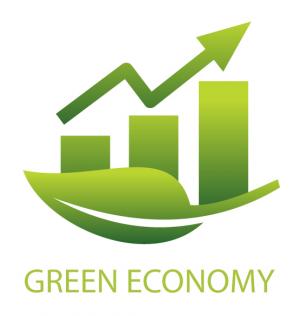Consolidation of Cape Verde protected Areas
Description
Source: Government of Cape Verde, UNDP Cape Verde
Cape Verde has a characteristical biodiversity of flora and fauna and is one of the top centers of endemism at the global level (ranked 11th) and the second largest nesting area in the north Atlantic for the loggerhead turtle. Furthermore it is an important host of breeding and feeding sites for humpback whales.
Environmental degradation in Cape Verde is closely linked to poverty. Lack of mineral resources with economic value, the growing population and low-income families cause
great pressure on natural resources (soil, water, vegetation). Other factors such as the
urban development, the expansion of tourism in the coastal zone and unregulated tourism pressure may pose a serious threat to the very assets that sustain its attractiveness. The recent speculation has been associated with existing pressures.
A System of Protected Areas, where none existed before, is in development in a close partnership with the government and the UNDP to have long-term solutions to conserve the biodiversity of Cape Verde.
Close to 41,000 hectares to the total protected areas have been added in 2012 to them already established by Law . This will increase the level of operational protected areas from only 6% to 77% of the expanded area. The purpose is, within four years, to create conditions to operate four terrestrial protected areas in the three different islands of Fogo, São Vicente and Santo Antão and to contribute to consolidation of three major marine protected areas in the islands of Sal and Boavista in natural parks for protection of fisheries. As well as reinforcing the national capacitiy for the management of Protected Areas.
The creation of new sectors of management and the promotion of participatory approaches in the management and conservation of endemic biodiversity of Cape Verde will ensure the ecological balance and the sustainability of ecosystems and reinforce the national capabilities for the management of Protected Areas.
SDGS & Targets
Goal 8
Promote sustained, inclusive and sustainable economic growth, full and productive employment and decent work for all
8.1
8.1.1
Annual growth rate of real GDP per capita
8.2
Achieve higher levels of economic productivity through diversification, technological upgrading and innovation, including through a focus on high-value added and labour-intensive sectors
8.2.1
Annual growth rate of real GDP per employed person
8.3
Promote development-oriented policies that support productive activities, decent job creation, entrepreneurship, creativity and innovation, and encourage the formalization and growth of micro-, small- and medium-sized enterprises, including through access to financial services
8.3.1
Proportion of informal employment in total employment, by sector and sex
8.4
Improve progressively, through 2030, global resource efficiency in consumption and production and endeavour to decouple economic growth from environmental degradation, in accordance with the 10-Year Framework of Programmes on Sustainable Consumption and Production, with developed countries taking the lead
8.4.1
Material footprint, material footprint per capita, and material footprint per GDP
8.4.2
Domestic material consumption, domestic material consumption per capita, and domestic material consumption per GDP
8.5
8.5.1
Average hourly earnings of female and male employees, by occupation, age and persons with disabilities
8.5.2
Unemployment rate, by sex, age and persons with disabilities
8.6
8.6.1
Proportion of youth (aged 15-24 years) not in education, employment or training
8.7
Take immediate and effective measures to eradicate forced labour, end modern slavery and human trafficking and secure the prohibition and elimination of the worst forms of child labour, including recruitment and use of child soldiers, and by 2025 end child labour in all its forms
8.7.1
Proportion and number of children aged 5‑17 years engaged in child labour, by sex and age
8.8
Protect labour rights and promote safe and secure working environments for all workers, including migrant workers, in particular women migrants, and those in precarious employment
8.8.1
Fatal and non-fatal occupational injuries per 100,000 workers, by sex and migrant status
8.8.2
Level of national compliance with labour rights (freedom of association and collective bargaining) based on International Labour Organization (ILO) textual sources and national legislation, by sex and migrant status
8.9
By 2030, devise and implement policies to promote sustainable tourism that creates jobs and promotes local culture and products
8.9.1
Tourism direct GDP as a proportion of total GDP and in growth rate
8.10
Strengthen the capacity of domestic financial institutions to encourage and expand access to banking, insurance and financial services for all
8.10.1
(a) Number of commercial bank branches per 100,000 adults and (b) number of automated teller machines (ATMs) per 100,000 adults
8.10.2
Proportion of adults (15 years and older) with an account at a bank or other financial institution or with a mobile-money-service provider
8.a
8.a.1
Aid for Trade commitments and disbursements
8.b
By 2020, develop and operationalize a global strategy for youth employment and implement the Global Jobs Pact of the International Labour Organization
8.b.1
Existence of a developed and operationalized national strategy for youth employment, as a distinct strategy or as part of a national employment strategy
SDG 14 targets covered
Deliverables & Timeline
Resources mobilized
Partnership Progress
Feedback
Action Network


